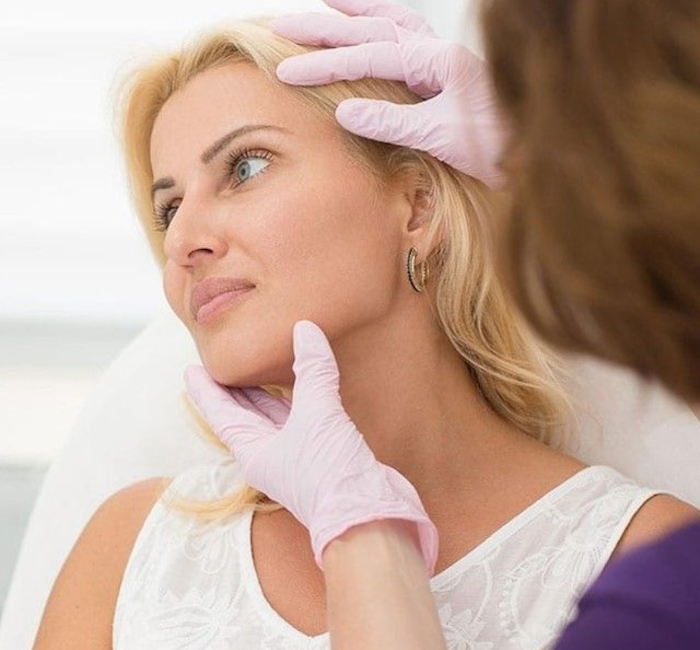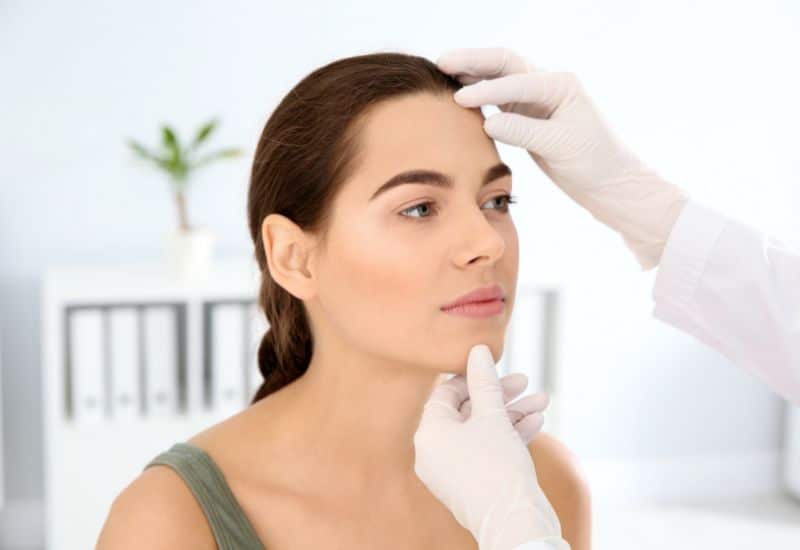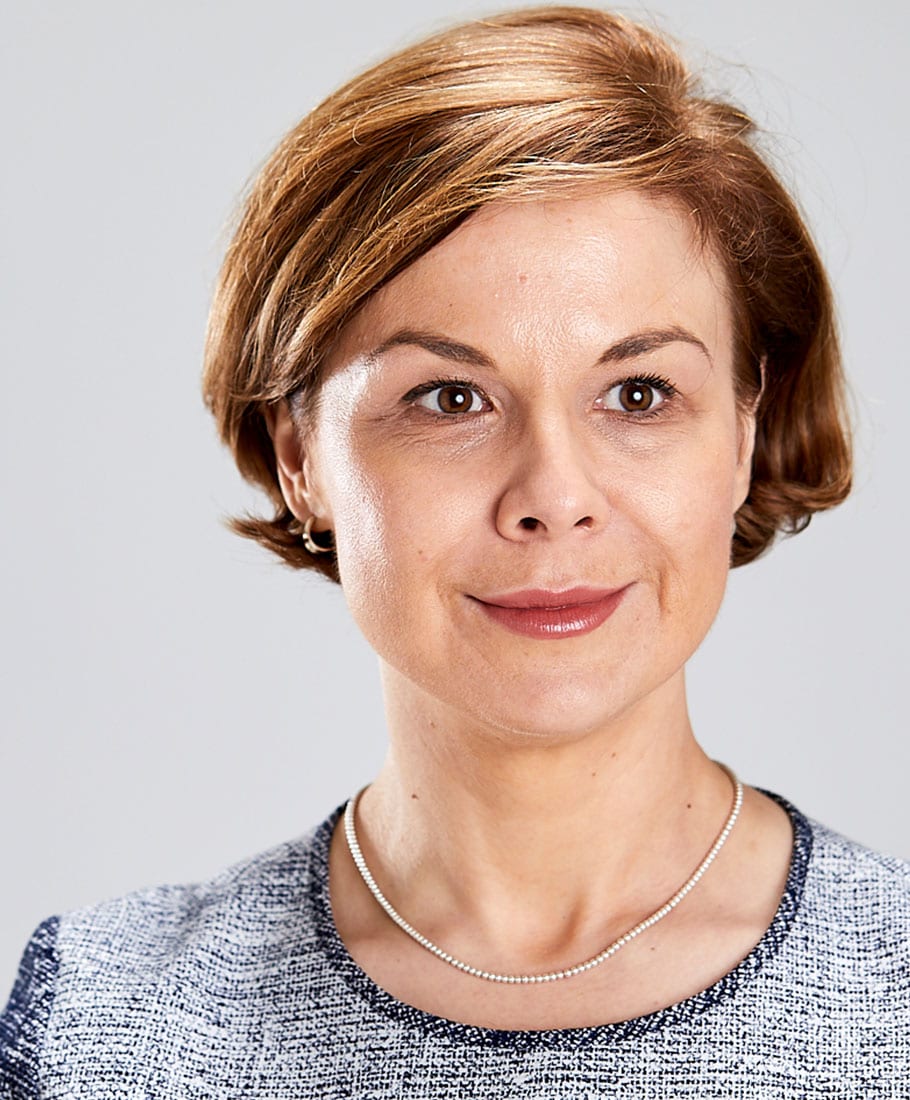Procedures
Full Thickness Skin Graft – FTSG

Full Thickness Skin Graft (FTSG) is a medical procedure with a significant role in both dermatology and reconstructive surgery. When you have a severe loss of skin, perhaps due to conditions like burns, skin cancer removal, or injuries, this procedure can serve as a path toward a better quality of life.
Plastic Surgeon Anca Breahna performs a range of Skin cancer surgery procedures at Cheshire Cosmetic Surgery in Chester UK.
At a glance
Local or General Anaesthesia
A few weeks
Table of Contents
What is Full Thickness Skin Graft
Full Thickness Skin Graft is a surgical procedure that transplants skin from one part of the body to another. Unlike partial thickness grafts, where only a layer of skin is taken, full thickness grafts involve removing and transplanting all the layers of the skin, including the epidermis and the entire dermis. This makes the graft more robust and often provides better cosmetic and functional results. Here are some key points:
- It involves the removal of all layers of skin from a donor site and transplanting it to a recipient site on the body
- Donor Site: Commonly, the donor site is an area with excess skin, such as the abdomen or the upper arm
- Recipient Site: This is the area that has suffered skin loss and requires the graft
The procedure is generally carried out under general or local anaesthesia, depending on the extent of the graft and the patient’s overall health.

Who Needs Full Thickness Skin Graft?
Determining who is a good fit for Full Thickness Skin Graft (FTSG) surgery is an important aspect of this medical procedure. Here’s a breakdown of the key groups of people who typically need this kind of surgery and the specific conditions that often make this procedure the right choice:
Burn Victims
- If you have suffered from severe burns that affect multiple layers of your skin, FTSG is often the recommended course of action
- It is particularly useful when the burned area is too large or deep to heal naturally or with the help of simpler treatments
- The procedure can help replace the damaged skin with a healthy graft, improving both function and appearance
Skin Cancer Patients
- After skin cancer removal, particularly when a large lesion has been excised, a full thickness graft may be required to cover the open wound
- This is especially relevant if the wound is on a part of the body where the skin doesn’t easily stretch for stitching
- The goal is to encourage quicker healing and reduce complications that may arise from an open wound
Chronic Ulcers or Sores
- Some people suffer from chronic skin conditions that result in ulcers or sores that don’t heal easily
- If you have a long-term wound or ulcer, particularly due to conditions like diabetes or poor circulation, FTSG may be suggested as a lasting solution
- The new graft can accelerate healing and reduce the risk of infection
Trauma Patients
- Accidents can result in a loss of skin due to abrasions, cuts, or other types of trauma
- In severe cases, the loss of skin may be too extensive for natural healing to occur without assistance
- FTSG offers a way to repair these extensive injuries, leading to improved healing times and less scarring
General Suitability Factors
- Before recommending an FTSG, the healthcare provider will assess your overall health, looking at factors such as age, general health status, and any other underlying conditions you may have
- The availability of a suitable donor site on your body is another key consideration
Sometimes, pre-surgery tests and evaluations are done to determine if you can safely undergo this surgical procedure and to help predict the likely success of the graft.
Benefits of the Full Thickness Skin Graft Procedure
When you’re considering a medical procedure as significant as Full Thickness Skin Graft (FTSG), it’s important to know the benefits that come along with it. While any surgical intervention has its risks, understanding the potential upsides can help you make an informed decision. So, let’s discuss some of the key advantages you could experience with an FTSG.
Better Skin Match
- One of the standout benefits of opting for an FTSG over a partial-thickness graft is the quality of the match between the graft and the existing skin
- Since all the layers of the skin are included in a full-thickness graft, it tends to blend more seamlessly with the skin at the recipient site
- This is especially valuable for grafts on visible areas of the body, like the face, where you would want the most natural look possible
Reduced Risk of Contracture
- Contracture is a condition where the skin becomes overly tight, often due to scarring
- With FTSG, the risk of skin tightening or contracture is generally lower compared to partial thickness grafts
- This is particularly important in areas around joints or places on the body that need to maintain a good range of motion, such as the elbows or knees
Durable and Long-lasting
- FTSGs are known for their durability. With proper care and barring any complications, these grafts are long-lasting
- Once the graft has fully taken and the healing process is complete, you can expect a robust and durable patch of skin that’s well-suited for long-term function and aesthetics
Faster Healing of the Donor Site
- With FTSG, the entire layer of skin is removed from the donor site, allowing for more straightforward wound care
- When managed appropriately, the donor site tends to heal relatively quickly and with fewer complications compared to partial-thickness grafts, which might leave a “raw” area behind
Improved Quality of Life
- Perhaps one of the most significant benefits of FTSG is the potential for an improved quality of life
- Whether you’re dealing with burns, ulcers, or the after-effects of skin cancer removal, a successful FTSG can offer you relief from ongoing pain, difficulty in movement, or social discomfort related to the appearance of your skin

How Is the Full Thickness Skin Graft Procedure Performed
The following provides an in-depth look into the key stages of how an FTSG is typically performed.
Preoperative Preparation
- Prior to the surgery, a comprehensive health check-up is performed to make sure you’re a suitable candidate for the procedure
- Anca will identify the donor and recipient sites on your body
- You may also receive guidelines on what to eat or avoid, and medications to stop taking before the surgery
Anaesthesia Administration
- The procedure starts with the administration of anaesthesia
- This can be local, regional, or general anaesthesia depending on the size of the graft and the specific conditions of your case
- The anaesthesia ensures you feel no pain during the surgery
Harvesting the Graft
- After numbing the area, Anca will carefully remove the required skin from the donor site using a scalpel
- The piece of skin will be a full-thickness graft, meaning it includes both the top layer (epidermis) and the underlying layer (dermis)
Preparing the Recipient Site
- Anca will then prepare the area where the graft will be placed by removing any damaged or diseased skin
- This is done carefully to create a clean and healthy surface for the graft to adhere to
Transferring and Attaching the Graft
- The harvested skin is then moved to the recipient site
- It is aligned carefully and sutured into place
- Sometimes, additional measures like skin staples or tissue glue are used for better adherence
Dressing and Stabilising the Graft
- Once the graft is secure, a sterile dressing is applied over it
- The dressing serves to protect the graft, keep it in place, and minimise the risk of infection
Closing the Donor Site
- The area from which the skin was taken will also be carefully closed, often with sutures
- A dressing is then applied to facilitate healing and minimise infection risk
Monitoring
- After the surgery, you will be closely monitored to ensure that both the graft and donor site are healing as expected
- You may be given medication to manage pain and antibiotics to prevent infection
Recovery after Full Thickness Skin Graft Procedure
Let’s now discuss what to expect during the recovery period and some guidance to help you manage this crucial time effectively.
Immediate Postoperative Phase
- Once the surgery is complete, you’ll be moved to a recovery area for close monitoring
- Here, medical professionals will ensure that you’re stable, manage your pain levels, and check for any immediate complications
- Depending on the complexity of your case, you may be discharged the same day or might need to stay in the hospital for observation
Managing Pain and Discomfort
- Pain management is a top priority in the days following the procedure
- You’ll be prescribed medications to help control pain and will receive guidelines on when and how to take them
- Cold compresses may also be recommended to minimise swelling and discomfort
Wound Care
- Proper care of both the graft site and the donor site is vital for successful healing
- You’ll be given specific instructions on how to clean the area, change dressings, and what signs of infection to watch for
- It is essential to follow these guidelines to the letter to minimise risks
Activity and Mobility
- Movement is generally restricted for the first few days to a week to help the graft adhere well
- You’ll receive instructions on what types of movement to avoid, especially stretching or straining the graft area
- Gradual reintroduction of regular activities is advised, guided by Anca’s recommendations
Follow-up Appointments
- Routine check-ups with your plastic surgeon are a key part of the recovery process
- During these visits, the healing progress of the graft and donor sites will be assessed, and stitches may be removed if necessary
- Adjustments to your treatment plan will be made based on your healing progress
Nutrition and Hydration
- Proper nutrition can accelerate the healing process
- You may be advised to eat a balanced diet rich in protein and nutrients that support skin regeneration and wound healing
Emotional Support
- While this guide focuses on physical recovery, emotional support is also an important aspect
- Reach out to friends, family, or mental health professionals if you find the recovery process emotionally taxing
Monitoring for Complications
- Be vigilant for any signs of complications like increasing pain, redness, swelling, or signs of infection
- Immediate medical attention is needed if you notice any of these symptoms
Reviews
Patient satisfaction is the top priority for Anca. You can find how patients feel about her work below.
Miss Breahna removed a cancerous nodule from my forehead in March 2021. I was quite nervous when I arrived at the hospital, but when I was greeted by a member of her team I started to feel calmer as they were so professional and friendly. Once inside the theatre Miss Breahna and her team helped me to feel relaxed and comfortable throughout, the team atmosphere was friendly and upbeat during my operation and I was looked after wonderfully.
I would recommend Miss Breahna and her team to anyone requiring this type of surgery.
Kate Hodson

Ms Anca Breahna was most kind and empathetic during my recent procedure for skin cancer. She reassured me that I’m now completely clear, I have total confidence in her and would recommend her unreservedly. Thank you Anca.
Further Reading
- Read Anca’s Blog on Looking for Skin Cancer Treatment near Chester?
- Read Anca’s Blog on Treatments for Nerve Lacerations and Trauma Damage

Procedure
Frequently asked questions
What is a Full Thickness Skin Graft and how does it differ from other types of skin grafts?
A Full Thickness Skin Graft (FTSG) involves the removal and transfer of a layer of skin that includes both the epidermis and the underlying dermis. This contrasts with other types like Split-Thickness Skin Grafts, which only include a portion of the dermis along with the epidermis. FTSGs are typically used for smaller, more visible areas where appearance and function are important, such as the face or hands.
Who is a good candidate for a Full Thickness Skin Graft?
Candidates for FTSG often include those who have suffered from significant skin loss due to burns, injuries, or surgical removal of skin cancers. People with non-healing ulcers or wounds that haven’t responded well to other treatments may also be candidates. It is essential to have a thorough medical evaluation to determine suitability for this procedure, considering factors like overall health, age, and the specific area requiring the graft.
What should I expect during the recovery period?
Recovery varies from person to person but generally involves strict wound care, pain management, and limited physical activity to allow the graft to adhere properly. You’ll have frequent follow-up appointments to monitor healing and may require medications to manage pain and prevent infection. Depending on the case, you might also need physical therapy to improve mobility in the affected area.
What are the risks associated with Full Thickness Skin Grafts?
While generally safe when performed by qualified medical professionals, FTSGs do come with potential risks. These can include infection, graft failure, scarring, reduced sensation, and uneven skin tone. There’s also a risk of complications at the donor site, such as delayed healing or infection. Thorough preparation and strict adherence to post-operative care guidelines can minimise many of these risks.
How long does it take for the graft to fully heal?
The time for full healing can vary widely depending on the size and location of the graft, your overall health, and how well you adhere to postoperative care instructions. Generally, initial healing where the graft adheres to the site might take two to three weeks. Complete healing, including the fading of scars and the return of more normal skin function, can take several months. Anca will give you more specific timelines based on your personal medical situation.
What are the risks of full thickness skin graft procedure?
While Full Thickness Skin Grafts (FTSG) offer many benefits, it’s equally important to be aware of the potential risks involve. Here is a list of factors to consider:
Infection Risk
- Infection at the graft or donor site is a potential complication that requires immediate attention
- You’ll usually be given antibiotics as a preventive measure, but it’s important to follow all wound-care guidelines to minimise this risk
Graft Failure
- There’s a chance the graft may not take, meaning it doesn’t integrate well with the recipient site
- Signs of this include continued pain, discolouration, or an obvious separation of the graft from the underlying skin
Scarring and Uneven Skin Tone
- Scarring is almost inevitable, but in some cases, it might be more prominent
- The grafted skin may also not match the surrounding skin perfectly in colour or texture, causing a noticeable difference
Reduced Sensation
- You might experience a loss of sensation in both the donor and recipient sites
- While some feeling often returns as the nerves regenerate, it may not return entirely
Bleeding
- Excessive bleeding during or after the procedure is a risk, although it’s rare
- If bleeding doesn’t subside with basic first aid, immediate medical attention is required
Impaired Mobility
- Particularly when the graft is near a joint, you might experience reduced mobility in the affected area
- Physical therapy is sometimes recommended to improve this
Donor Site Complications
- The site from which the skin was taken also carries risks such as infection, scarring, and delayed healing
- Care for the donor site is just as important as care for the graft site
Adverse Reaction to Anaesthesia
- While uncommon, some people have allergic or other adverse reactions to the anaesthesia used during the procedure
- Make sure to discuss any prior reactions to medications or anaesthetics with your plastic surgeon beforehand
Medical References about Full Thickness Skin Graft
- Full-Thickness Skin Grafts – StatPearls – NCBI Bookshelf
- Skin Grafting – StatPearls
- Full-Thickness Skin Grafts: When They’re Used and Needed






